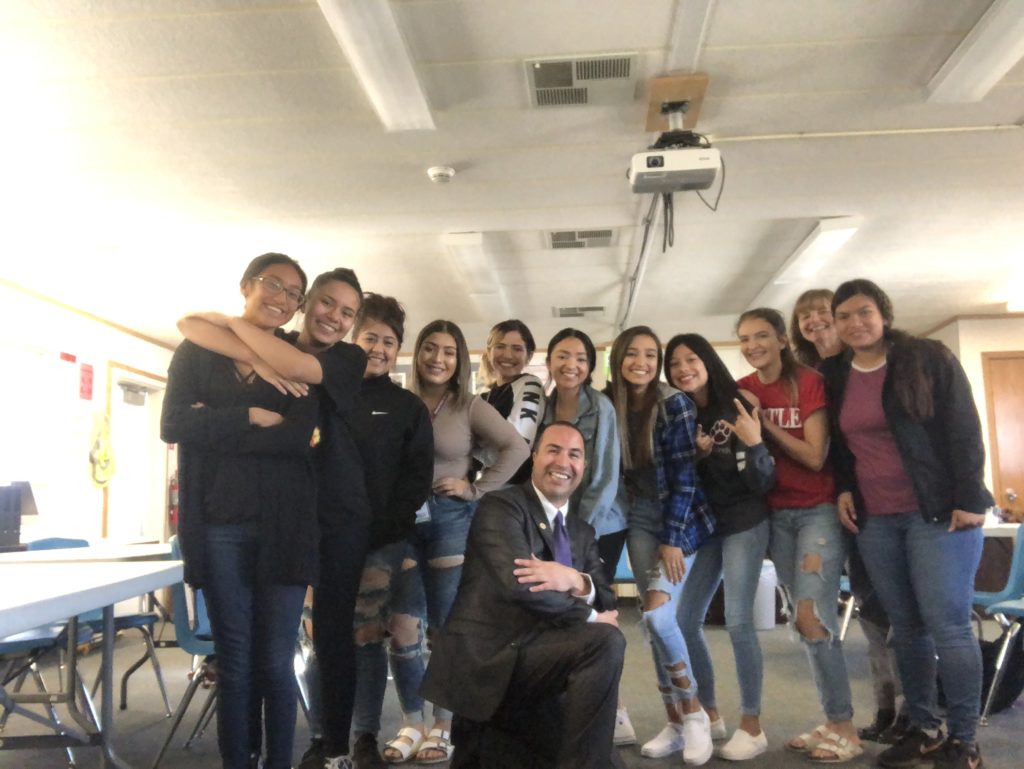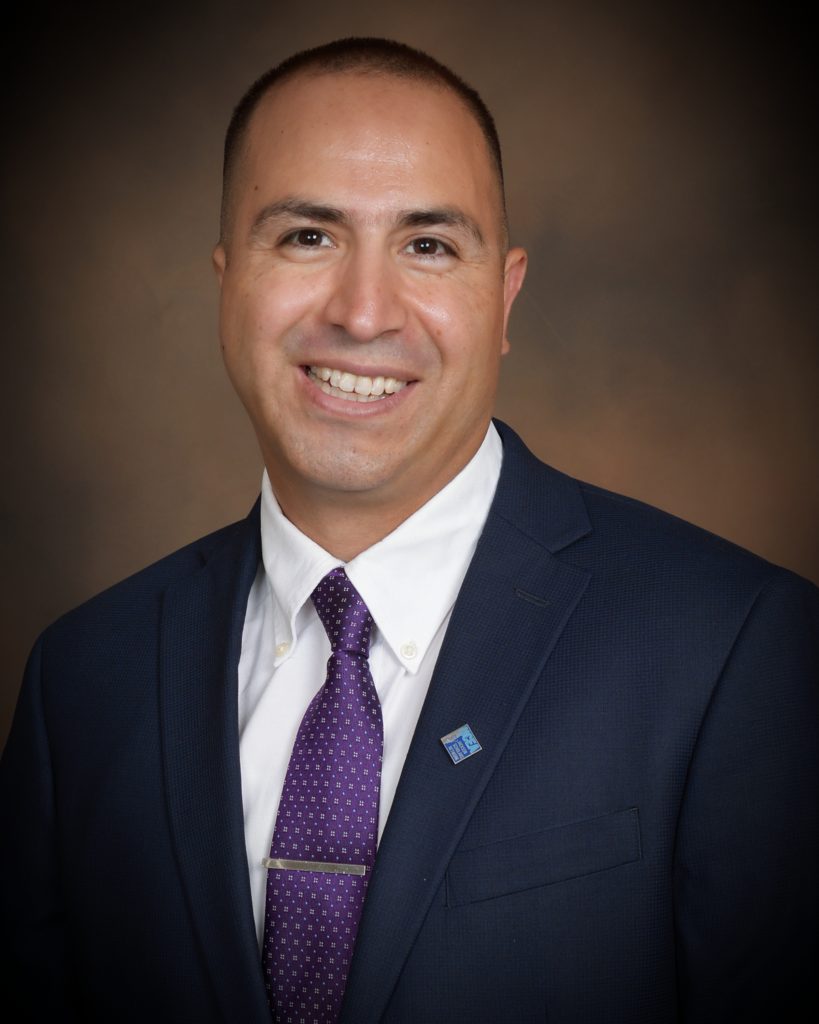Navigating the White Space
by Keith Reyes
“This professor is extremely unprofessionally (sic)…His discrimination and bias to (sic) white people is ridiculous.” –Student
The words above were written in one of the first student evaluations I received in my first year at White Space University (a pseudonym), a predominately White institution (PWI) in the Pacific Northwest. These words served as an induction for me into the psychological, emotional, and professional ramifications of what being a professor of color means.
I viewed my being hired as an assistant professor at White Space U as the culmination of what seemed to me to be an almost lifelong effort of making something of my life and of finally becoming an “academic”. Having dropped out of school at the age of 17, served time in jail for possession of drugs, and truly made a mess of most of my early life, being hired as a professor was an extremely special moment for me. Sadly, it was a very short-lived moment. In this essay I use one comment written on one of my student evaluations to elucidate the racialized dynamics a person of color has to contend with, within the White space of a PWI, but before that I want to highlight a term essential to this conversation: White space.
The White space
White space is a theoretical term dubbed by Leo-Moore in her study of racism within law schools (Leo-Moore, 2008). Stated succinctly, the white space is both an objective and subjective space that encompasses not just social institutions that have been created, legitimated, and reproduced by historical dejure segregation and the more contemporary defacto segregation in the U.S., but also encompasses the values of objectivity, rationality, and instrumentality (Leo- Moore, 2008). More recently, sociologist Elijah Anderson identified and further refined the theoretical aspects of the White space to include that the White space is ubiquitous because it encompasses the great majority of public places in the U.S., must be navigated by people of color because it encompasses almost every social institution i.e. schools, shopping malls, neighborhoods, and even workplaces, and has to be navigated with tremendous care by people of color because it is a dehumanizing space that discredits people of color and poses tremendous emotional, psychological, and sometimes even physical dangers to people of color who enter within it (Anderson, 2011/2015).
White Space U, was my first concrete, professional experience with the White space. It did not help that I was hired to teach multicultural education; a course developed to confront racism and biases aspiring teachers possess, to a predominately White student body, a population that frequently experiences childhood socialization in ways that discourages racial conversations and avoids the recognition of privilege that Whiteness bestows upon White Americans (DeAngelo, 2018).
“This professor is unbearable to be in the same room with….I do not know why (White Space U) would employ a man like this.” –Student
This quote was emblematic of many of the comments in my student evaluations because they were not only generally quite vague in their critiques, I mean this student never explained what about me was unbearable to be around, but because comments like these were also immensely discrediting to my dignity as a human being and questioned my worthiness to teach at White Space U. These comments were also very hurtful because I value the perspectives and opinions my students possess about my teaching. I have always strived to serve them to the best of my abilities, regardless of how agreeable/disagreeable their personalities and dispositions. I mentioned earlier that one of the defining aspects of the White space is that people of color who enter are subject to a process of dehumanization and a discrediting to their personhood.
For Mexican American or Latin American persons of color entering the White space, this discrediting process can begin with a strong accent, the mispronunciation of a word, or the use of Spanish. Because I speak without an accent, have a strong command of the English vocabulary, and rarely mispronounce words, my students had little fodder to initiate the discrediting process. Unfortunately, they were able to resort to the fail-proof tactic for discrediting a person of color; me simply entering the White space. Unless they can pass as White, a person of color entering the White space is discredited because in doing so, they are immediately relegated to a subordinate racial status within the space (Anderson, 2015). Regardless of formal organizational authority i.e. professor, I as a person of color was subordinate to the White students because no amount of education, no amount of experience, no formal title I possessed trumped the subordinate identity bestowed upon me by my skin color in this racialized society. My students knew that. Unfortunately, I did not.
Shortly after reading the above student’s comment, I found myself mentally retracing my steps from that quarter; each class session, each interaction with my students, frantically searching for when and where I may have interacted with a student in a way that left them feeling so offended by my presence, so hurt by my interaction that they felt it was unbearable to be in the room with me. Needless to say, it was like searching for a needle in a haystack. I could not for the life of me, recall a heated or contentious moment with any student, certainly not one that would leave them feeling this way. I would always greet each one of my classes with a warm, and genuine smile and “good morning” or “good afternoon”. I memorized all of my students’ names and greeted them by name as they came in. I even greeted the students who showed up late by thanking them for being in class afterwards, so as to not put them on the spot when they walked in late.

Conversely, my students were always smiling at me in class and always seemed very warm and kind to me. It was only on my student evaluations that I would read what they really thought of me. Needless to say, while it was too late to revisit my memory and identify the student whom I had offended so greatly in the previous quarter, I found myself being more mindful of how I was interacting with my students in subsequent quarters. I became even kinder, worked to become more agreeable, memorized even more names, avoided pointed disagreement with comments my students made in class or in their papers, invested greater time each quarter to ensure each student felt valued and safe, and worked to ensure students found me at least, “bearable”. All this labor was of course to no avail. No matter how many names I memorized, no matter how agreeable I was, no matter how I shifted my behavior, the dehumanizing, discrediting comments continued to show up on subsequent student evaluations.
I now know it had nothing to do with my teaching strategies. I did not realize that upon entering the White space, people of color must quickly fall in line and become what White people think they are supposed to be or risk removal. The only way a person of color can navigate their way around the discrediting processes at work within the White space is by continually performing to the idealized expectations that the White people in that space have for that person of color. The more noble expectations that people of color are worthy of dignity, credible sources of knowledge, or intelligent, are often unattainable in the White space, not because people of color are not any of these things, but because they are denied legitimacy.
Within the White space, the idea that people of color are dangerous, less intelligent, and inferior are more easily legitimized. I discovered that people of color can really only be what White people want them to be in the White space, or else they are removed, or, as was the case in my experience, they remove themselves because of the exhaustion and overwhelmingly futile labor necessary to be found worthy of being and staying in the White space. Despite teaching for 15 years across the entire k-20 spectrum, serving as an administrator, and possessing a doctorate in educational leadership and administration, my student evaluations reminded me that within the White Space of White Space U, I was not ever going to be smart enough, or worthy of being seen as an expert in anything. My students’ comments, the great majority (85+%) of which were White, consistently brought into question my credibility and the validity of what I was teaching them about the teaching profession. They also reinforced my understanding of my own unworthiness to enter, and stay within, the White space.
My students’ comments were also the reason I ultimately relinquished my dream of being a university professor. In June of 2019, just three years after I was given my assistant professorship, I formally resigned and exited White Space U. I resigned despite having met all the tenure track requirements necessary for promotion to the title of associate professor and the acquisition of tenure. I instead opted for a far less prestigious instructor position at a community college and Hispanic Serving Institution (HSI), a brown space. It is a far safer and kinder space in terms of how my predominately racial minority students treat me, where the things they say about me on my student evaluations reflect the dignity and worth I possess as a human being, irrespective of the color of my skin and the title institutionally bestowed upon me.
About the Author

Dr, Keith Reyes holds a B.A. in Practical Theology (2005), an M.A. in Sociology (2008), and a Doctorate of Education in Educational Leadership from Washington State University (2015). In 2013, he was named WSU’s 2013-2015 Jackson Scholar, an award conferred by the University Council of Educational Administration. He also holds a Texas teaching state certificate in bilingual education and secondary social studies and possess a Texas Principal/Administrative license. Awarded teacher of the year in 2010 at Yakima Valley Community College and was nominated for the K. Patricia Cross Future Leaders Award in 2015. In 2017-2018, Dr.. Reyes earned the Service of the Year Award from CWU’s College of Education and Professional Studies and in 2018-2019 earned the Professor of the Year Award as well.
Dr. Reyes also served as an Assistant Professor of Educational leadership and administration at Central Washington University, a PK-12 administrator/assistant principal in Van Horn, TX, and as an educator has worked within the educational system for 15 years within both k-12 and post-secondary schooling systems, five years within the k-12 system and ten years within higher education. From 2010-present Dr. Reyes has been a full-time sociology, education, Chicano and Ethnic studies instructor and advisor at Yakima Valley College.
Dr. Reyes presented at three national educational leadership conferences for the University Council of Educational Administration and two regional educational globalization conferences hosted by Washington State University. My research interests are grounded in issues of social justice; racial and socioeconomic educational inequity, bilingual education, higher education, and educational leadership.
References
Anderson, E. (2011). The cosmopolitan canopy: Race and civility in everyday life. New York, NY: W.W. Norton & Company.
Anderson, E. (2015). The white space. Sociology of Race and Ethnicity, 1, (1) 10-21. DOI: 10.1177/2332649214561306
DeAngelo, R. (2018). White fragility: Why it’s so hard for white people to talk about racism. Boston, MA: Beacon Press.
Leo-Moore, W. (2008). Reproducing racism: White space, elite law schools, and racial inequality. New York, NY: Rowman & Littlefield Publishers.
